#d0d1d2 Color Information
In a RGB color space, hex #d0d1d2 is composed of 81.6% red, 82% green and 82.4% blue. Whereas in a CMYK color space, it is composed of 1% cyan, 0.5% magenta, 0% yellow and 17.6% black. It has a hue angle of 210 degrees, a saturation of 2.2% and a lightness of 82%. #d0d1d2 color hex could be obtained by blending #ffffff with #a1a3a5. Closest websafe color is: #cccccc.
-
- R 82
- G 82
- B 82
-
- C 1
- M 0
- Y 0
- K 18
● #d0d1d2 color description : Grayish blue.
#d0d1d2 Color Conversion
The hexadecimal color #d0d1d2 has RGB values of R:208, G:209, B:210 and CMYK values of C:0.01, M:0, Y:0, K:0.18. Its decimal value is 13685202.
| Hex triplet | d0d1d2 | #d0d1d2 |
|---|---|---|
| RGB Decimal | 208, 209, 210 | rgb(208,209,210) |
| RGB Percent | 81.6, 82, 82.4 | rgb(81.6%,82%,82.4%) |
| CMYK | 1, 0, 0, 18 | |
| HSL | 210°, 2.2, 82 | hsl(210,2.2%,82%) |
| HSV (or HSB) | 210°, 1, 82.4 | |
| Web Safe | cccccc | #cccccc |
| CIE-LAB | 83.79, -0.159, -0.622 |
|---|---|
| XYZ | 60.444, 63.664, 70.073 |
| xyY | 0.311, 0.328, 63.664 |
| CIE-LCH | 83.79, 0.642, 255.666 |
| CIE-LUV | 83.79, -0.624, -0.914 |
| Hunter-Lab | 79.79, -4.412, 3.783 |
| Binary | 11010000, 11010001, 11010010 |
Color Schemes with #d0d1d2
Alternatives to #d0d1d2
Below, you can see some colors close to #d0d1d2. Having a set of related colors can be useful if you need an inspirational alternative to your original color choice.
#d0d1d2 Preview
This text has a font color of #d0d1d2.
<span style="color:#d0d1d2;">Text here</span>This paragraph has a background color of #d0d1d2.
<p style="background-color:#d0d1d2;">Content here</p>This element has a border color of #d0d1d2.
<div style="border:1px solid #d0d1d2;">Content here</div>.text {color:#d0d1d2;}.background {background-color:#d0d1d2;}.border {border:1px solid #d0d1d2;}Shades and Tints of #d0d1d2
A shade is achieved by adding black to any pure hue, while a tint is created by mixing white to any pure color. In this example, #030303 is the darkest color, while #f8f8f8 is the lightest one.
-
#030303
#030303rgb(3,3,3) -
#0d0d0d
#0d0d0drgb(13,13,13) -
#161717
#161717rgb(22,23,23) -
#202021
#202021rgb(32,32,33) -
#292a2b
#292a2brgb(41,42,43) -
#333435
#333435rgb(51,52,53) -
#3d3e3f
#3d3e3frgb(61,62,63) -
#464849
#464849rgb(70,72,73) -
#505253
#505253rgb(80,82,83) -
#595b5d
#595b5drgb(89,91,93) -
#636567
#636567rgb(99,101,103) -
#6d6f71
#6d6f71rgb(109,111,113) -
#76797b
#76797brgb(118,121,123)
-
#808385
#808385rgb(128,131,133) -
#8a8c8f
#8a8c8frgb(138,140,143) -
#949698
#949698rgb(148,150,152) -
#9ea0a2
#9ea0a2rgb(158,160,162) -
#a8aaac
#a8aaacrgb(168,170,172) -
#b2b4b5
#b2b4b5rgb(178,180,181) -
#bcbdbf
#bcbdbfrgb(188,189,191) -
#c6c7c8
#c6c7c8rgb(198,199,200) -
#d0d1d2
#d0d1d2rgb(208,209,210) -
#dadbdc
#dadbdcrgb(218,219,220) -
#e4e5e5
#e4e5e5rgb(228,229,229) -
#eeeeef
#eeeeefrgb(238,238,239) -
#f8f8f8
#f8f8f8rgb(248,248,248)
Tones of #d0d1d2
A tone is produced by adding gray to any pure hue. In this case, #d0d1d2 is the less saturated color, while #a6d1fc is the most saturated one.
-
#d0d1d2
#d0d1d2rgb(208,209,210) -
#ccd1d6
#ccd1d6rgb(204,209,214) -
#c9d1d9
#c9d1d9rgb(201,209,217) -
#c5d1dd
#c5d1ddrgb(197,209,221) -
#c2d1e0
#c2d1e0rgb(194,209,224) -
#bed1e4
#bed1e4rgb(190,209,228) -
#bbd1e7
#bbd1e7rgb(187,209,231) -
#b7d1eb
#b7d1ebrgb(183,209,235) -
#b4d1ee
#b4d1eergb(180,209,238) -
#b0d1f2
#b0d1f2rgb(176,209,242) -
#add1f5
#add1f5rgb(173,209,245) -
#a9d1f9
#a9d1f9rgb(169,209,249) -
#a6d1fc
#a6d1fcrgb(166,209,252)
Color Blindness Simulator
Below, you can see how #d0d1d2 is perceived by people affected by a color vision deficiency. This can be useful if you need to ensure your color combinations are accessible to color-blind users.
